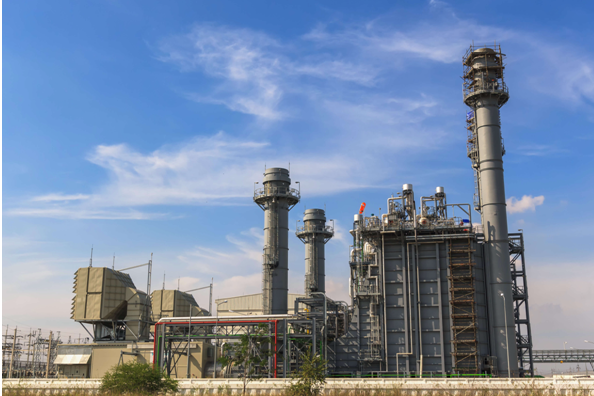Industrial and manufacturing processes often produce various pollutants, including sulfur dioxide (SO2), which can have significant environmental and health impacts. To mitigate these effects, industries employ SO2 scrubbers, also known as sulfur dioxide scrubbers, to remove this harmful gas from emissions. This article explores the importance of SO2 scrubbers, their working principles, benefits, and why they are essential for maintaining air quality in industrial settings.
What is an SO2 Scrubber?
An SO2 scrubber is a device used to remove sulfur dioxide from industrial exhaust gases. Sulfur dioxide is a byproduct of burning fossil fuels and other industrial processes. It contributes to air pollution and can lead to acid rain, respiratory problems, and other environmental issues. SO2 scrubbers are designed to capture and neutralize this gas before it is released into the atmosphere.
How Do SO2 Scrubbers Work?
SO2 scrubbers, specifically wet scrubbers, operate by bringing exhaust gases into contact with a scrubbing liquid, usually a water-based solution. Here’s a step-by-step overview of the process:
- Gas Inlet: The polluted exhaust gas enters the scrubber through an inlet.
- Scrubbing Liquid: A scrubbing liquid is sprayed or circulated over the gas stream. This liquid typically contains chemicals that react with sulfur dioxide.
- Chemical Reaction: The sulfur dioxide in the gas reacts with the chemicals in the scrubbing liquid, forming a neutral compound, often a sulfate or sulfite.
- Gas Outlet: The cleaned gas, now free of sulfur dioxide, exits the scrubber through an outlet.
- Waste Management: The used scrubbing liquid, containing the neutralized compounds, is collected and processed for disposal or further treatment.
Types of SO2 Scrubbers
There are several types of SO2 scrubbers, each suited for different industrial applications. The most common types include:
1. Wet Scrubbers
Wet scrubbers are the most widely used type of SO2 scrubber. They use a liquid solution to capture and neutralize sulfur dioxide. Wet scrubbers are highly effective and can handle large volumes of gas, making them ideal for industrial applications.
2. Dry Scrubbers
Dry scrubbers use a dry reagent or slurry to react with and remove sulfur dioxide from exhaust gases. While they are less efficient than wet scrubbers, dry scrubbers are beneficial in situations where water use needs to be minimized.
3. Semi-Dry Scrubbers
Semi-dry scrubbers combine elements of both wet and dry scrubbers. They use a slurry that is sprayed into the gas stream, which then evaporates, leaving behind dry particles that can be collected and removed.
Benefits of Using SO2 Scrubbers
Environmental Protection
The primary benefit of using an SO2 scrubber is the reduction of sulfur dioxide emissions, which helps protect the environment. By capturing and neutralizing this gas, scrubbers prevent acid rain, reduce smog, and improve overall air quality.
Regulatory Compliance
Many industries are subject to strict environmental regulations that limit the amount of sulfur dioxide they can emit. Using sulfur dioxide scrubbers helps companies comply with these regulations, avoiding fines and legal penalties.
Health Benefits
Reducing sulfur dioxide emissions has direct health benefits for the surrounding communities. Lower levels of SO2 in the air reduce the risk of respiratory problems, cardiovascular diseases, and other health issues associated with air pollution.
Cost Savings
While the initial investment in SO2 scrubbers can be significant, they often lead to long-term cost savings. By improving efficiency and reducing the need for pollution control measures, scrubbers can lower operating costs and enhance profitability.
Industrial Applications of SO2 Scrubbers
SO2 scrubbers are used in various industries, including:
Power Plants
Power plants, especially those that burn coal or oil, are significant sources of sulfur dioxide emissions. SO2 scrubbers are essential for these facilities to meet environmental standards and reduce their impact on air quality.
Refineries
Oil refineries produce sulfur dioxide as a byproduct of refining processes. Implementing sulfur dioxide scrubber in these facilities helps mitigate their environmental footprint and ensures compliance with regulations.
Chemical Plants
Chemical manufacturing processes often involve the release of sulfur dioxide. SO2 scrubbers in these plants capture and neutralize the gas, preventing it from being released into the atmosphere.
Metal Processing
Metal smelting and processing can generate substantial sulfur dioxide emissions. Using SO2 scrubbers in these industries is crucial for minimizing pollution and protecting the environment.
Choosing the Right SO2 Scrubber
When selecting an SO2 scrubber for your facility, consider the following factors:
Efficiency
Choose a scrubber that offers high efficiency in removing sulfur dioxide. Wet scrubbers are typically more efficient than dry or semi-dry options.
Capacity
Ensure the scrubber can handle the volume of gas produced by your operations. The scrubber’s capacity should align with your production levels to maintain optimal performance.
Maintenance
Consider the maintenance requirements of the scrubber. Regular maintenance is necessary to ensure the device operates efficiently and has a long service life.
Cost
Evaluate the total cost of ownership, including initial investment, operating costs, and potential savings from reduced emissions and regulatory compliance.
Conclusion
SO2 scrubbers are essential for industries aiming to reduce sulfur dioxide emissions and protect the environment. By investing in these systems, companies can ensure regulatory compliance, safeguard public health, and contribute to a cleaner, healthier world. Understanding the different types of scrubbers and their benefits allows businesses to make informed decisions about their air quality management strategies.
For industrial and manufacturing purposes, investing in a reliable so2 scrubber is a strategic move towards sustainability and operational efficiency. Implementing an effective sulfur dioxide scrubber not only supports environmental goals but also enhances the overall performance and reputation of the industry.
Ensure your operations are equipped with the best SO2 scrubber solutions to achieve optimal air purification and regulatory compliance. Embrace the future of clean industry practices today.
